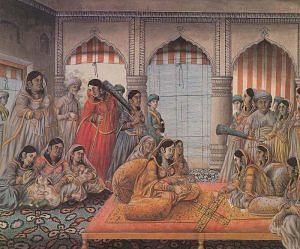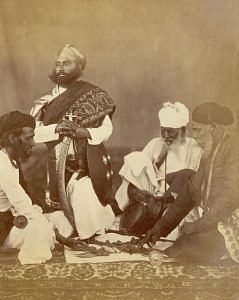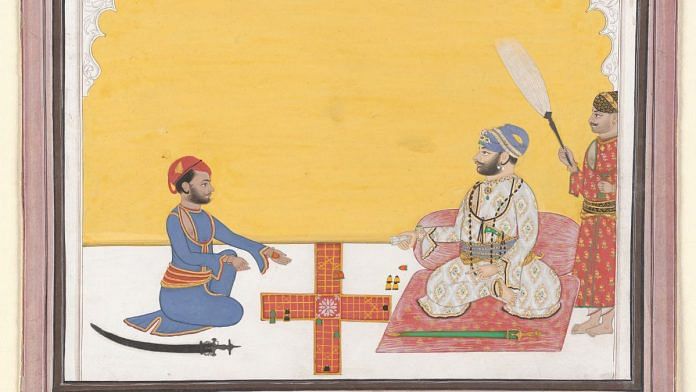Meant to be played by two or four people, Pachisi is a cross and circle board game that originated in India. While the game is traditionally played on a cross-shaped cloth, any surface may be used, including a drawing or engraving on the floor.
The origins of Pachisi are disputed, with some scholars speculating that a version of the game was played in the pivotal gambling scene in the Mahabharata, or was being played by Shiva and Parvati in a relief at Cave 29, Ellora. However, in the absence of any description of a board or gameplay, there is no evidence that these games were Pachisi and may have simply been bets made on rolls of the dice. The oldest evidence of Pachisi itself are the Mughal-built Pachisi courts at Agra and Fatehpur Sikri, which date back to the sixteenth century.
Here, the Mughal emperor Akbar and his noblemen would play the game at a grand scale, with courtesans in colourful costumes taking on the role of tokens. Details of these games and the gameplay have been recorded by his biographer, Abu’l Fazl, who notes that the game was already popular at the time, implying that Pachisi substantially pre-date Mughal rule. Further evidence of the game exists in the form of surviving boards and tokens, as well as paintings from Mughal and Rajput-era manuscripts, which depict people playing the game.

Also read: Sarasa—The Gujarati kalamkari cloth that became a rage in Japan thanks to Dutch traders
Most cross and circle games use a board made of a circle enclosing a cross, usually in the form of paths. This can also mean that the tokens used by players follow a circular movement along the central cross without the presence of an actual circle, as is the case with Pachisi. The board for Pachisi consists of four pathways, each of which is eight tiles long and three wide. All four pathways meet in a central area known as charkoni. Some tiles, usually three or four per arm of the cross, are marked with an “X” and are called castles. They are arranged such that there are always twenty-five paces between the first castle on one arm and the last castle on the next arm, hence the name pachisi, which means twenty-five in Hindi and Urdu.

In the traditional gameplay, four players were divided into teams of two, with the players sitting across from each other being part of the same team. Each player had four tokens, all of which were placed in the charkoni. Players took turns casting the cowrie shells, and the one with the highest roll made the first move of the game, followed by the other in a counterclockwise order. Once the game began, each player moved one of their tokens according to the roll of the cowrie shells, first going down the middle column of the arm that faced the player, then up and down the outer paths of each of the remaining arms in a counterclockwise progression, with the last path being the same as the first. The first team to return all their tokens to the charkoni after completing a full circuit of the board won the game.
Capturing and blocking tokens was also a major component of the gameplay. An opponent’s token was considered captured when a player landed on the same square as that token. Captured tokens were sent back to the charkoni and had to begin the game anew. In some versions of the game, a token could only finish at the charkoni if it has captured at least one enemy token during its time on the board.
Another Indian game that is similar to, and possibly also contemporaneous with Pachisi, is Chaupar (not to be confused with Gyan Chaupar) which uses stick dice in place of the cowrie shells used in Pachisi. Early European variations of Pachisi include Ludo, a British game invented in the late nineteenth century, and Mensch ärgere Dich nich, an early twentieth-century German game. Later American adaptations of the game include Sorry! and Parcheesi.
Today, Ludo is the most commonly played version of Pachisi in India, although the original version is still played in some parts. Pachisi boards and tokens from various periods of Indian history can be found in the collections of the National Museum, New Delhi; The British Museum and the Victoria and Albert Museum, London, UK; the Swiss Museum of Games; the Children’s Museum of Indianapolis, USA; and in the Nasser D. Khalili Collection of Islamic Art.
This excerpt is taken from MAP Academy’s ‘Encyclopedia of Art’ with permission.
The MAP Academy is a non-profit, online platform — consisting of an Encyclopedia, Courses and a Blog — which encourages knowledge building and engagement with the visual arts of the region.



